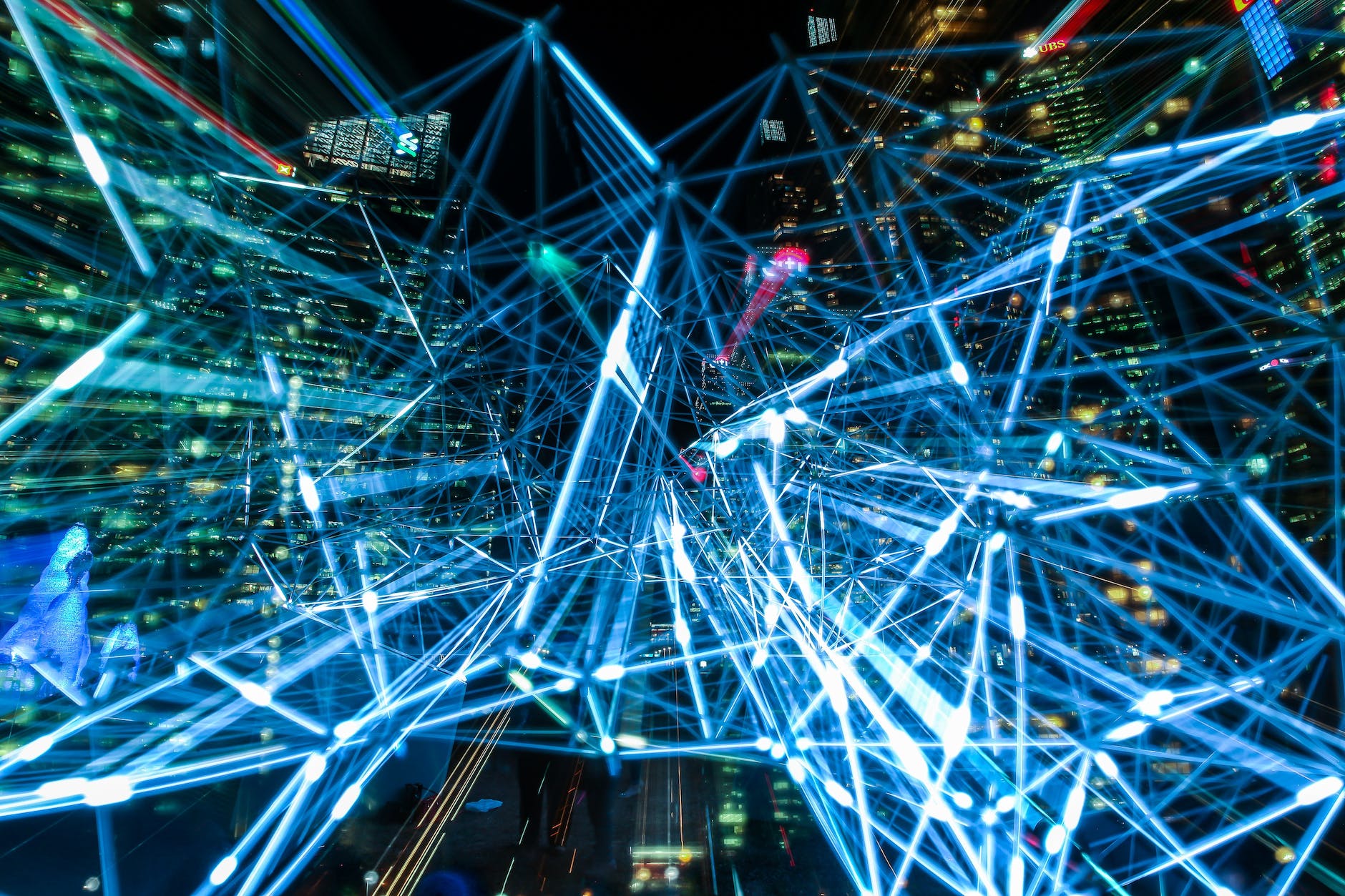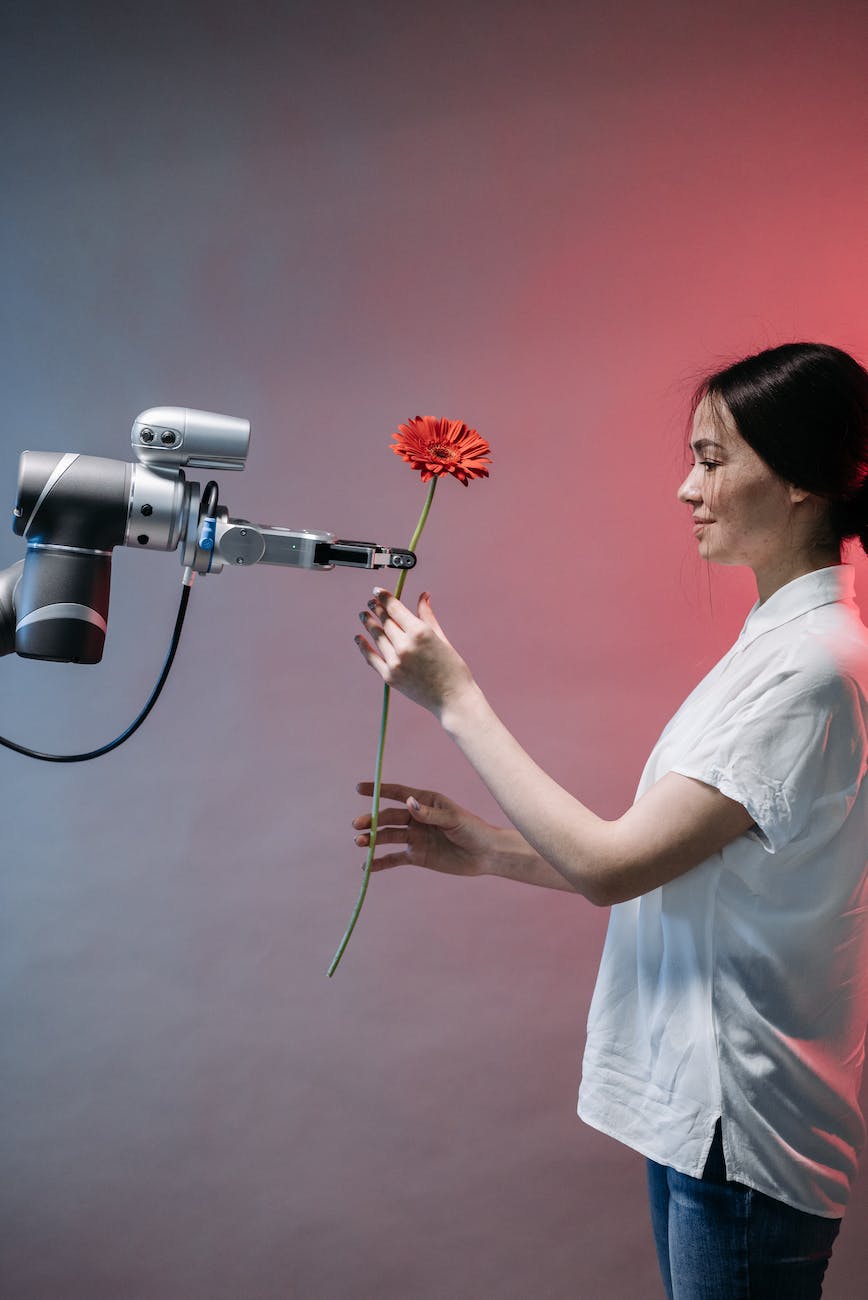The rapid advancement of artificial intelligence (AI) and technological change is reshaping the way we work, revolutionizing industries across the globe. Automation adoption and the growth of job opportunities in data processing are direct results of this transformation. As job growth continues to be impacted by technological change, the labor market is experiencing significant shifts. With the adoption of automation, various sectors, including healthcare and finance, are seeing profound implications for employment opportunities and work dynamics due to the integration of AI technologies. Organizations must adapt to occupational shifts and technological change in the labor market in order to remain competitive employers in a rapidly evolving job landscape.
The integration of AI technologies has the potential to automate routine employment tasks, freeing up human workers to focus on more complex and generative activities in the labor market. However, it also raises concerns about job displacement and the need for upskilling or reskilling in order to thrive in this new era of occupational shifts in the US labor market. Employment and hiring are directly affected by these changes. The future of employment in the US labor market will require a delicate balance between leveraging AI’s capabilities while ensuring that employers and hiring processes keep humans at the forefront of decision-making.
We will delve into the impact of AI on different industries, discuss strategies for employers to navigate these occupational shifts successfully, and examine how people can prepare themselves for an AI-driven workplace and secure employment.
Three Ways AI Will Transform the Future of Work
Automation Powered by AI Streamlines Repetitive Tasks
AI systems are revolutionizing employment by automating repetitive tasks for employers and generative people. This means that machines can handle mundane and monotonous activities in production work, freeing up valuable time for humans to focus on more complex and creative aspects of their occupations. Generative AI has revolutionized employment. With the help of AI, businesses can streamline their production work, increase growth, and boost efficiency and productivity. Employers and people can benefit from AI in streamlining operations and increasing productivity.
-
Pros:
-
AI-powered automation can increase labor efficiency by performing tasks faster and with greater accuracy than people. This can lead to a significant percent improvement in productivity.
-
Time-saving: By eliminating repetitive tasks, employers can allocate more time to strategic thinking and problem-solving, benefiting both labor and people in various occupations.
-
Employers are increasingly turning to generative AI to meet the growing demand for cost-effective solutions. Automating routine processes can reduce labor costs by a significant percent in the long run.
-
Cons:
-
Job displacement: The adoption of AI systems may lead to job losses in certain industries as machines take over repetitive tasks. This could affect employers, labor, and people, as generative technologies become more prevalent.
-
Skill requirements for people in an increasingly automated workforce will include acquiring new skills to adapt to changing job roles, particularly in the context of generative AI. Approximately a percent of workers will need to develop these skills.
Machine Learning Algorithms Enhance Data-Driven Decision-Making Processes
Machine learning algorithms, including generative AI, enable businesses to make data-driven decisions by analyzing vast amounts of information. These algorithms can analyze data from people and provide insights with a high degree of accuracy. In fact, studies have shown that businesses that utilize machine learning algorithms experience an average increase in productivity of 15 percent. These generative AI algorithms learn from patterns and trends within data sets, providing valuable insights that can drive business outcomes and inform decision-making processes for people across various industries.
-
Pros:
-
Improved decision-making: Generative AI machine learning algorithms can process large volumes of data quickly, identifying patterns and making accurate predictions.
-
Enhanced customer experience: By analyzing customer data using generative AI, businesses can personalize services based on individual preferences and needs.
-
Competitive advantage: Companies that leverage machine learning algorithms gain a competitive edge by utilizing data effectively.
-
Cons:
-
Data privacy concerns: The use of generative AI and machine learning algorithms requires careful consideration of privacy regulations and ethical implications surrounding data collection and usage.
-
Bias in algorithms: If not properly trained or monitored, machine learning algorithms may perpetuate biases present in the data they are trained on.
Collaborative Robots Augment Human Capabilities and Improve Safety
Collaborative robots, also known as cobots, are designed to work alongside humans in various industries, leveraging the power of generative AI. These generative AI robots can perform tasks that require precision, strength, or endurance, augmenting human capabilities and improving safety in the workplace. Generative AI cobots can collaborate with workers rather than replace them entirely.
-
Pros:
-
Increased productivity: Cobots, powered by generative AI, can assist with physically demanding tasks, allowing humans to focus on more complex activities.
-
Enhanced safety: By taking over hazardous or repetitive tasks, cobots reduce the risk of workplace accidents and injuries.
-
Improved job satisfaction: Workers can delegate mundane tasks to cobots and concentrate on more fulfilling aspects of their jobs.
-
Cons:
-
Initial investment: Integrating cobots into existing workflows may require significant upfront costs for businesses.
-
Training requirements: Employees will need training to operate and collaborate effectively with cobots.
-
Limited adaptability: Cobots may not be suitable for all industries or tasks, limiting their applicability in certain fields.
As AI continues to advance, it will transform the future of work by automating repetitive tasks, enabling data-driven decision-making processes through machine learning algorithms, and enhancing collaboration between humans and robots. These transformations will redefine job roles and necessitate the development of new skills among workers. Embracing these changes is crucial for individuals and organizations seeking to thrive in a globalized world driven by AI systems.
Ten Challenges to Address for AI, Automation, and the Future of Work
Ensuring Ethical Use of AI Technology
One of the key challenges in the future of work is ensuring the ethical use of AI technology. As automation technologies continue to advance, there is a growing concern about potential bias and discrimination embedded within these systems. It is crucial to develop robust frameworks that minimize bias and ensure fairness in decision-making processes. This involves thorough testing, validation, and ongoing monitoring to address any biases that may arise.
Preparing Workers for Reskilling or Upskilling
With the rapid advancement of automation and new technologies, job requirements are evolving at an unprecedented pace. To tackle this challenge, it is essential to prepare workers for reskilling or upskilling. Providing access to training programs and educational opportunities can help individuals acquire the necessary skills to adapt to changing job demands. This will enable them to remain competitive in a globalized world where technological advancements are reshaping industries.
Addressing Concerns about Job Displacement
The rise of automation adoption has raised concerns about job displacement. Many fear that machines will replace human workers, leading to unemployment and economic instability. To mitigate these concerns, it is important to find ways to manage the impact of automation on society. This could involve implementing policies such as universal basic income or creating new job opportunities in emerging sectors driven by automation technologies.
Developing Regulations for Worker Protection
As more tasks and services become automated, it is crucial to develop regulations that strike a balance between innovation and protecting worker rights. Robust labor laws should be put in place to safeguard employees from exploitation in an increasingly automated workforce. These regulations should address issues such as fair compensation, working conditions, privacy protection, and job security.
Fostering Collaboration between Humans and Machines
While automation technologies offer numerous benefits, it is essential not to compromise human autonomy or creativity. The challenge lies in fostering collaboration between humans and machines, leveraging the strengths of both. By combining human ingenuity with AI capabilities, we can achieve higher levels of productivity and innovation. This collaboration can lead to the development of new tools and services that enhance our lives and drive economic growth.
Bridging the Digital Divide
In a globalized world, bridging the digital divide is crucial to ensure equal access to opportunities. Not everyone has the same level of access to technology or the necessary skills to leverage it effectively. Efforts should be made to provide affordable internet connectivity, digital literacy programs, and access to training in underserved communities. This will empower individuals from all backgrounds to participate in the future workforce.
Adapting Education Systems
As automation reshapes industries, education systems must adapt accordingly. Traditional models of education may no longer be sufficient in preparing students for future job roles. Schools and universities need to incorporate STEM (Science, Technology, Engineering, and Mathematics) subjects into their curricula from an early age. There should be a focus on developing critical thinking skills, creativity, problem-solving abilities, and adaptability.
Managing Labor Shortages
The adoption of automation technologies may lead to labor shortages in certain sectors as tasks are automated. To address this challenge, proactive measures should be taken to identify areas where labor shortages are likely to occur. Governments and organizations can then invest in training programs or incentivize workers to transition into these sectors through financial support or other means.
Balancing Technological Advancements with Human Well-being
While technological advancements have the potential for immense benefits, they must not come at the expense of human well-being. The future of work should prioritize creating environments that promote work-life balance, mental health support systems, and fair working conditions. It is essential that we design technology-driven workplaces that prioritize employee well-being alongside efficiency gains.
Collaborating Globally
The challenges posed by AI technology and automation are global in nature. Collaboration among nations, organizations, and individuals is crucial in addressing these challenges effectively.
Examining Occupations at Risk in an AI-driven World
In an increasingly globalized world, the advancement of artificial intelligence (AI) technologies has the potential to significantly impact the future of work. Certain occupations are particularly vulnerable to automation by AI systems, especially those that involve routine manual tasks. Industries such as transportation, manufacturing, and customer service may experience significant changes in employment patterns as a result.
Jobs in these sectors often involve repetitive tasks that can be easily automated by AI technologies. For example, self-driving vehicles have the potential to replace human drivers in the transportation industry. This shift could lead to a decrease in demand for traditional driving jobs, affecting many individuals who rely on these occupations for their livelihoods.
Manufacturing is another sector that may undergo significant changes due to increased automation. With advancements in robotics and machine learning, AI systems have the ability to perform repetitive assembly line tasks with greater efficiency and accuracy than humans. This could lead to a reduction in the number of workers needed in manufacturing plants.
Customer service is yet another area where AI technologies are making their mark. Chatbots and virtual assistants are becoming increasingly common tools used by companies to handle customer inquiries and support requests. While these technologies can provide efficient and round-the-clock assistance, they also have the potential to replace human customer service representatives.
However, it’s important to note that not all occupations will be replaced entirely by AI systems. Jobs that require high levels of data analysis or pattern recognition skills are less likely to be fully automated but may still undergo transformation. For instance, healthcare professionals who rely on diagnostic imaging may see improvements through AI-powered image analysis tools that can help detect abnormalities more accurately.
Moreover, while some jobs may be at risk of displacement due to automation, new opportunities may emerge as well. The development and implementation of AI technologies require skilled professionals who can design, develop, and maintain these systems. As such, there will likely be an increased demand for individuals with expertise in AI-related fields.
Exploring the Changing Landscape of Jobs and Skills in the Age of AI
In an ever-evolving world driven by artificial intelligence (AI), the job market is experiencing a significant transformation. As advancements in AI continue to reshape industries, it is important to understand how these changes impact the future of work. Let’s delve into the key aspects that shape this changing landscape.
New jobs leveraging emerging technologies
Advancements in AI are expected to give rise to new job opportunities that leverage emerging technologies such as machine learning engineering and data science. These roles will require individuals with a strong understanding of AI algorithms, programming languages, and data analysis techniques. The demand for professionals who can develop and implement AI-powered solutions will continue to grow across various sectors.
The value of soft skills
While technical expertise remains crucial, soft skills are becoming increasingly valuable in a technology-driven work environment. Critical thinking, creativity, and emotional intelligence are essential qualities that cannot be replicated by machines. As automation takes over routine tasks, human workers who possess these soft skills will be sought after for their ability to problem-solve, innovate, collaborate, and adapt to change.
Lifelong learning and adaptability
In a rapidly changing job market influenced by AI, lifelong learning is no longer an option but a necessity. Individuals must continuously upskill or reskill themselves to remain relevant amidst technological advancements. Embracing new technologies and acquiring additional knowledge through continuous learning initiatives will enable individuals to stay ahead of the curve.
Rise of hybrid roles
As technology continues to disrupt industries, there is an increasing demand for professionals who possess both technical expertise and domain knowledge. Hybrid roles that combine specialized technical skills with industry-specific knowledge are becoming more prevalent. For example, healthcare professionals with expertise in medical informatics can bridge the gap between medicine and technology by designing innovative healthcare solutions powered by AI.
Adapting sectors and shifting job requirements
The impact of AI on different sectors varies, leading to shifts in job requirements. While some jobs may become obsolete due to automation, new roles will emerge. For instance, the transportation sector may witness a decline in traditional driving jobs as autonomous vehicles gain traction. However, there will be a surge in demand for AI specialists who can develop and maintain the underlying AI infrastructure.
Staying Informed with the Latest Developments in AI and Workforce Trends
To navigate the rapidly changing landscape of work in a globalized world, it is crucial to stay informed about advancements in artificial intelligence (AI) and monitor workforce trends. By doing so, individuals and organizations can better understand the potential impact on industries and job markets, anticipate skill gaps, plan for future talent needs, and enhance professional growth opportunities.
Keeping up-to-date with AI advancements
Staying abreast of AI developments allows individuals to grasp its potential implications for various industries. By regularly following news articles, research papers, and industry reports, one can gain insights into how AI is being implemented across different sectors. For example, keeping an eye on how AI is transforming customer service can help professionals working in this field adapt their skills accordingly.
Monitoring workforce trends
In a rapidly evolving work environment driven by technological advancements such as AI, monitoring workforce trends becomes essential. This practice helps organizations identify emerging skill requirements and anticipate future talent needs. By analyzing data collection related to employment patterns and industry shifts, companies can proactively address skill gaps and align their hiring strategies accordingly.
Engaging in continuous learning opportunities
As AI technologies continue to evolve at a rapid pace, engaging in continuous learning opportunities is vital for professional growth and career prospects. Taking part in online courses or attending workshops focused on AI-related topics equips individuals with the knowledge needed to adapt to changing job roles. For instance, learning about machine learning algorithms or data analysis techniques can open doors to new opportunities within fields that heavily rely on these technologies.
Networking with experts in the field of AI
Building connections with experts in the field of AI provides valuable insights into industry best practices and emerging opportunities. Attending conferences or joining professional networks dedicated to AI enables individuals to engage in discussions with thought leaders who have firsthand experience with implementing AI solutions. These interactions can offer valuable guidance on navigating the impact of AI on the workforce and provide access to potential career opportunities.
Embracing Opportunities: Preparing for the Future of Work in a Globalized World
The future of work is rapidly evolving, driven by advancements in artificial intelligence (AI) and the increasing interconnectedness of our globalized world. To thrive in this changing landscape, organizations and governments must proactively embrace opportunities and navigate the challenges posed by AI’s impact on work.
Fostering a Culture of Innovation
Organizations need to shift their mindset from fearing AI as a threat to jobs to viewing it as a tool for growth and innovation. By embracing AI technologies, businesses can enhance productivity, streamline processes, and create new job opportunities. Rather than replacing human workers, AI can augment their capabilities and enable them to focus on higher-value tasks that require creativity and critical thinking.
-
Pros:
-
Increased efficiency and productivity through automation.
-
Creation of new job roles related to AI development, implementation, and maintenance.
-
Enhanced decision-making through data-driven insights provided by AI systems.
-
Cons:
-
Potential displacement of certain repetitive or low-skilled jobs.
-
Need for upskilling or reskilling existing employees to adapt to the changing work environment.
-
Ethical considerations regarding privacy, bias, and transparency in AI systems.
Government Policies for Workforce Transitions
Governments play a crucial role in supporting workforce transitions amidst the adoption of AI technologies. They should develop policies that promote lifelong learning initiatives, ensuring individuals have access to educational resources that equip them with relevant skills for emerging job opportunities. Governments must prioritize equitable access to these new jobs across different demographic groups.
-
Pros:
-
Facilitation of smooth transitions from traditional work activities to those requiring advanced technological skills.
-
Reduction in employment disparities by providing equal access to training programs.
-
Promotion of economic growth through an agile labor market that aligns with industry demands.
-
Cons:
-
Challenges associated with designing comprehensive policies that cater to the diverse needs of individuals and industries.
-
The need for substantial investment in educational infrastructure and resources to support lifelong learning initiatives.
-
Balancing the pace of technological advancements with policy development can be a challenge.
Collaboration for Comprehensive Strategies
Collaboration between academia, industry, and government is essential for developing comprehensive strategies that address the challenges posed by AI’s impact on work globally. By working together, these stakeholders can identify emerging trends, develop training programs aligned with industry needs, and ensure a smooth transition for workers into new job roles.
-
Pros:
-
Holistic approach to addressing the challenges posed by AI’s impact on work.
-
Leveraging diverse perspectives and expertise from academia, industry, and government.
-
Creation of tailored solutions that consider both short-term and long-term implications.
-
Cons:
-
Coordination challenges due to varying priorities and agendas among different stakeholders.
-
Time-consuming process to align strategies across multiple sectors.
-
Potential resistance or reluctance to change from established institutions or industries.
Emphasizing Diversity and Inclusion
As we navigate the changing landscape of work driven by AI, it is crucial to emphasize diversity and inclusion. Ensuring fair representation across gender, race, ethnicity, age, and other dimensions of diversity will foster innovation and prevent biases in AI systems. By embracing diversity in the workforce, organizations can tap into a broader range of perspectives and experiences that drive creativity and problem-solving.
-
Pros:
-
Increased innovation through diverse perspectives.
-
Mitigation of biases embedded in AI systems by incorporating diverse datasets during development.
-
Enhanced employee satisfaction through inclusive work environments.
-
Cons:
-
Overcoming unconscious biases that may hinder diversity efforts.
-
Addressing systemic barriers that limit access to opportunities for underrepresented groups.
-
Creating inclusive cultures where all employees feel valued may require significant organizational changes.
The Potential of AI to Shape the Future of Work
We discussed three ways AI will transform the future of work, including increased automation, enhanced decision-making capabilities, and improved productivity. We examined ten challenges that need to be addressed for AI, automation, and the future of work to coexist harmoniously. We also delved into occupations at risk in an AI-driven world and explored the changing landscape of jobs and skills in the age of AI.
To stay informed with the latest developments in AI and workforce trends, it is crucial for individuals and organizations alike to actively seek out information from reputable sources. This will enable them to adapt their skills and strategies accordingly. As we prepare for the future of work in a globalized world, it is essential to embrace opportunities that arise from advancements in AI technology. By investing in upskilling programs and fostering a culture of continuous learning, individuals can position themselves for success in an evolving job market.
FAQs
What are some industries that will be most impacted by AI?
Industries such as manufacturing, healthcare, finance, transportation, customer service, and retail are among those expected to experience significant impacts from AI. Automation technologies powered by artificial intelligence have already started transforming these sectors by streamlining processes, improving efficiency, and enabling new opportunities.
Will AI replace human workers completely?
While there may be concerns about job displacement due to automation driven by AI technology, it is unlikely that humans will be entirely replaced. Instead, certain tasks within jobs may become automated while new roles emerge that require human creativity, critical thinking abilities, emotional intelligence or problem-solving skills that machines cannot replicate.
How can individuals prepare themselves for the future of work?
Individuals can prepare themselves for the future of work by staying updated on technological advancements through continuous learning and professional development. Acquiring skills in areas such as data analysis, programming, cybersecurity, and digital literacy can enhance employability and enable individuals to adapt to changing job requirements.
What role does lifelong learning play in the age of AI?
Lifelong learning plays a crucial role in the age of AI as it allows individuals to keep their skills relevant and adaptable. By investing in continuous learning, individuals can stay ahead of technological advancements and remain competitive in the job market.
How can organizations embrace AI while ensuring ethical considerations?
Organizations can embrace AI while ensuring ethical considerations by implementing robust frameworks for responsible AI development and usage. This includes transparent decision-making processes, addressing biases within algorithms, protecting privacy rights, and fostering a culture of accountability and trust.



